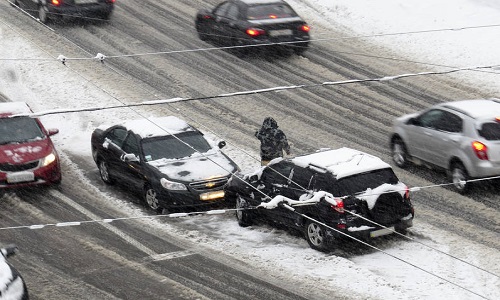By Elizabeth Sargeant
Toronto, Ontario — July 5, 2019 – North America has been facing some extreme weather this year. From massive hail storms to the unforgiving and icy polar vortex, forest fires and flood, the climate has not been kind, and collision repairers across the continent have been reaping the benefits. While Canadians and Americans alike have to shovel unimaginably large piles of snow and sleet out from underneath their vehicles, collision repairers are now adapting to PDR systems, learning how to remove constellations of hailstone dents from a line-up of bumped and dinged vehicles.
Mitchell Industry Data has just released a new report focusing on the correlation between weather patterns and collision claims and what they’ve discovered from observing mostly Americans driving habits is that this year has not been so kind to cars.
According to the study, there is a significant spike in accident claims in months with high levels of precipitation or cold temperatures. There is also a spike in non-repairable vehicles, as the most intense accidents also occur during these months.
States such as Georgia experienced the highest amounts of rainfall since 2004 and also faced an incredibly high amount of claims. According to Mitchell Data, “[Georgia experienced a] 7% increase in average repairable severity while states with above average and average levels saw 6.22% and 5.19% increases respectively.”
Despite the rare high-levels of precipitation, it has been predicted that the heavy precipitation will continue in the next three months, and certainly won’t be the last year repairers will have to deal with rainfall-related crashes.
Ryan Mandell the Director of Claims Performance for Mitchell’s Auto Physical Damage business unit believes auto insurers should take it upon themselves to warn drivers of the dangers.
“Forward-thinking insurance carriers may choose to provide updates – either through regular communications or targeted alerts – to their customers that inform them of the potential risks of driving during periods of inclement weather to help bring awareness to driver safety and thus potentially reduce overall claims exposure,” Mandell reported.
“Stopping short of employing full-time meteorologists, auto insurance carriers must still be cognizant of weather patterns and forecasts outside of potential CAT events in order to appropriately set reserves and staffing levels.”
For more information on collision and weather trends, click here and discover the future of driver safety.





































